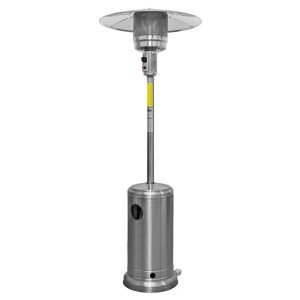15 Things You Didn't Know About Garden Heating Solutions
Garden Heating Solutions: Enhancing Outdoor Spaces Year-Round
As seasonal modifications bring differing temperature levels, garden enthusiasts face the obstacle of maintaining their treasured outdoor spaces. Whether for cultivating Fireplaces And Stoves , entertaining guests, or just taking pleasure in the fresh air, garden heating solutions are essential to making the most of satisfaction and functionality. This short article explores different options available for heating gardens, consisting of traditional and modern solutions, their advantages, and practical tips for execution.
Comprehending the Need for Garden Heating
A well-maintained garden should be a year-round sanctuary, offering respite in both summertime and winter. The need for garden heating develops from:
- Frost Protection: Certain plants, particularly tender varieties, require protection from frost to survive chillier months.
- Extended Growing Seasons: Heating solutions can enable earlier planting in spring and later harvesting in fall.
- Convenience Optimization: Outdoor gatherings and activities can take location more easily with regulated temperature levels.
Types of Garden Heating Solutions
Garden heating solutions can be divided into several categories based upon their innovation and fuel source. Here's a detailed take a look at some popular options:
1. Electric Heaters
Electric heaters are a versatile option for smaller gardens and patios. They are simple to install and run, using immediate warmth with minimal effort.
- Types of Electric Heaters:
- Patio Heaters: Freestanding units with a heating aspect that radiates warmth.
- Wall-mounted Heaters: Ideal for little spaces; these heaters conserve ground space while providing heat.
- Portable Electric Fans: Great for targeted heating in particular areas.
2. Gas Heaters
Gas patio heaters are a standard choice for outdoor heating and are widely appreciated for their efficiency and visual beauty.
- Kinds Of Gas Heaters:
- Propane Heaters: Easy to carry and set up, suitable for the majority of outdoor settings.
- Natural Gas Heaters: Permanent components, perfect for areas with existing natural gas lines.
3. Wood-burning Solutions
For a rustic touch, wood-burning solutions such as fire pits and chimineas include warmth and ambiance to gardens.
- Pros and Cons of Wood-burning Heating:
- Advantages: Aesthetic appeal, social environment, and efficient heat distribution.
- Disadvantages: Requires more maintenance, management of ashes, and possible fire risks.
4. Infrared Heaters
Infrared heaters utilize infrared radiation to directly warm objects, making them energy-efficient and ideal for outdoor areas.
- Benefits: Immediate heat, very little energy loss, and suitability for all weather.
5. Outdoor Heating Mats and Blankets
For smaller sized patio locations or specific zones in a garden, heating mats and blankets can be an ingenious service to offer an additional layer of heat.
Considerations for Choosing a Heating Solution
When choosing the very best heating solution for a garden, a number of aspects must be examined:
- Garden Size: Larger spaces might require multiple heating sources for efficient warmth.
- Spending plan: Various options exist at various rate points. Cost-effectiveness can determine the chosen approach.
- Security: Evaluate the safety features of the heating options, specifically when using gas or wood-burning solutions.
- Aesthetic Appeal: Integration with garden style can enhance general visual satisfaction.
Table 1: Comparison of Garden Heating Solutions
Type
Installation
Fuel Source
Efficiency
Cost
Electric Heater
Easy
Electricity
Rapid/Immediate
Moderate
Gas Heater
Moderate
Propane/Natural
High/Effective
Moderate to High
Wood-burning Option
Moderate/Hard
Wood
Reliable
Low to Moderate
Infrared Heater
Easy
Electrical energy
Immediate
Moderate to High
Heating Mats/Blankets
Easy
Electrical power
Targeted
Low to Moderate
Executing Garden Heating Solutions
To ensure effective heating in outdoor settings, a tactical approach is essential. Here are some useful tips:
- Evaluate the Layout: Consider the garden layout to determine locations where heating is most needed.
- Select Multidirectional Heaters: This will assist distribute heat more equally throughout the space.
- Enhance Insulation: Utilize windbreaks (like garden walls) or heat-retaining products around the heating setup.
- Incorporate Decor: Attractive styles of heating systems can boost the garden's ambiance while supplying heat.
- Regular Maintenance: Ensure that heaters (specifically gas and wood-burning) are preserved for ideal performance and safety.
FAQs About Garden Heating Solutions
1. How safe are electrical heaters for outdoor use?
Electric heaters created for outdoor usage are normally safe when installed correctly. Always follow maker standards and safety guidelines to reduce dangers.
2. Can I leave my gas heater outside throughout winter?
While lots of gas heaters are constructed for endurance outdoors, it's advisable to cover them or keep them inside to protect them from harsh weather.
3. Exist energy-efficient options for heating my garden?
Yes! Infrared heaters and heating mats are particularly energy-efficient as they focus heating in specific locations rather than warming the surrounding air.
4. What are the very best plants to grow in a warmed garden?
Popular choices include tomatoes, herbs, peppers, and other tender plants that thrive in temperature levels above 50 ° F (10 ° C).
Garden heating solutions immensely boost outdoor spaces, permitting for year-round pleasure and optimized plant development. By understanding the various types of heating options available and making notified choices based on personal preferences and particular garden conditions, garden enthusiasts can transform their outdoor locations into cozy retreats, regardless of the season.
